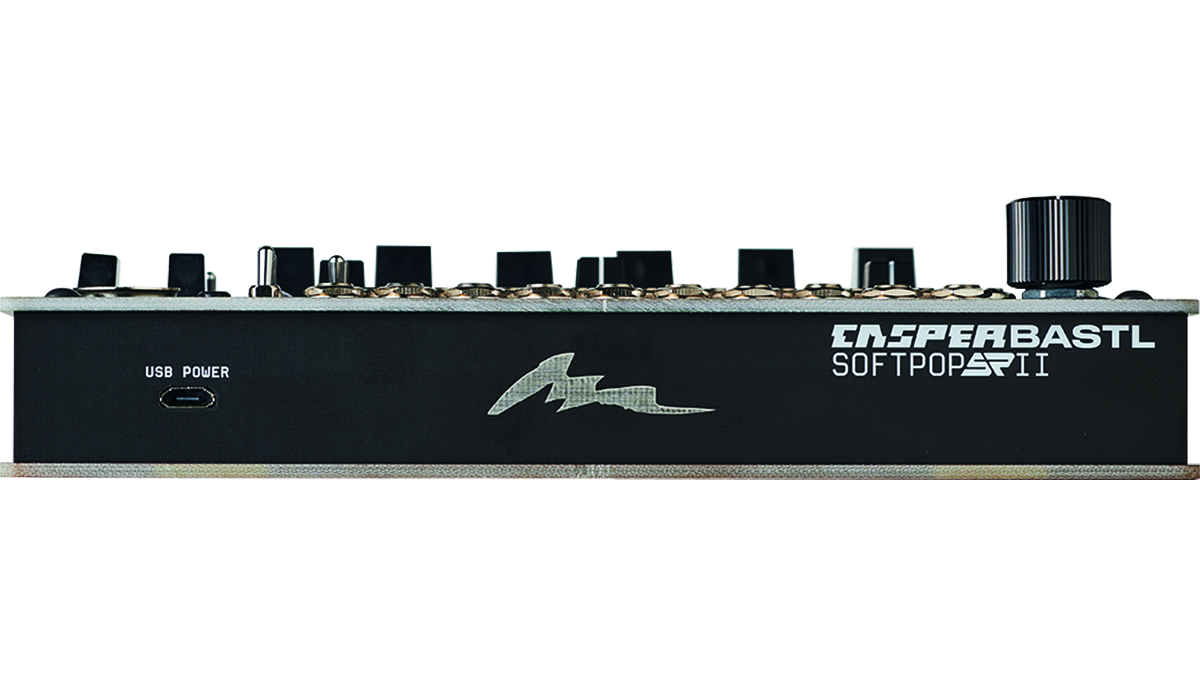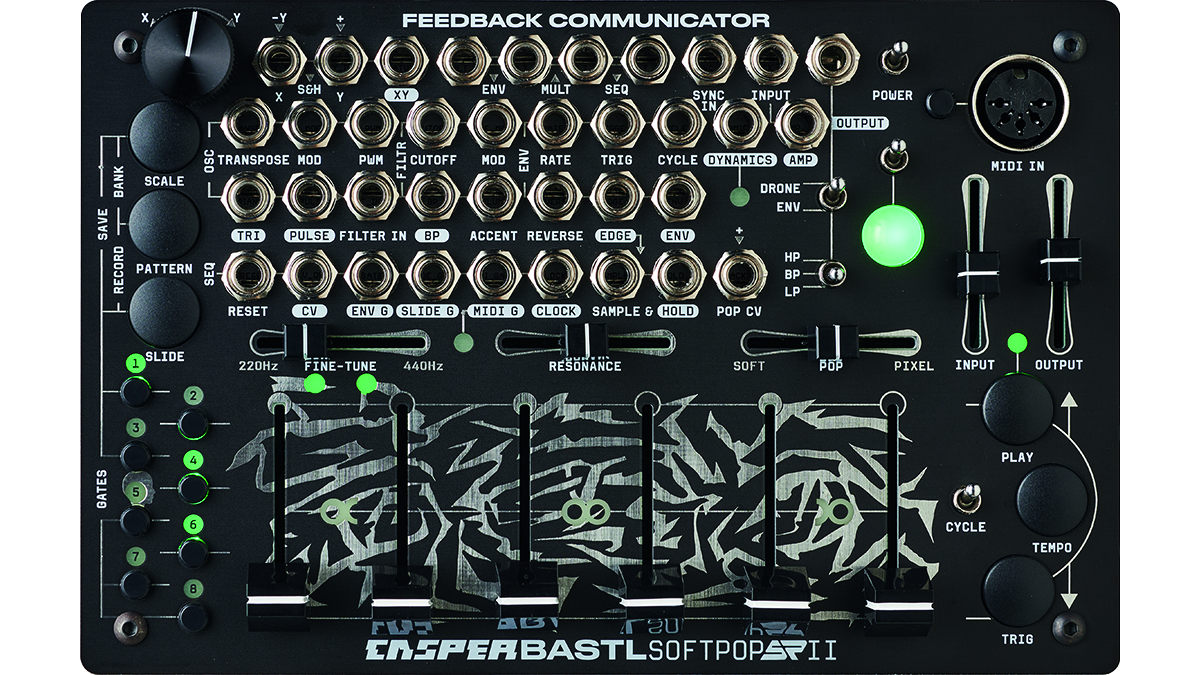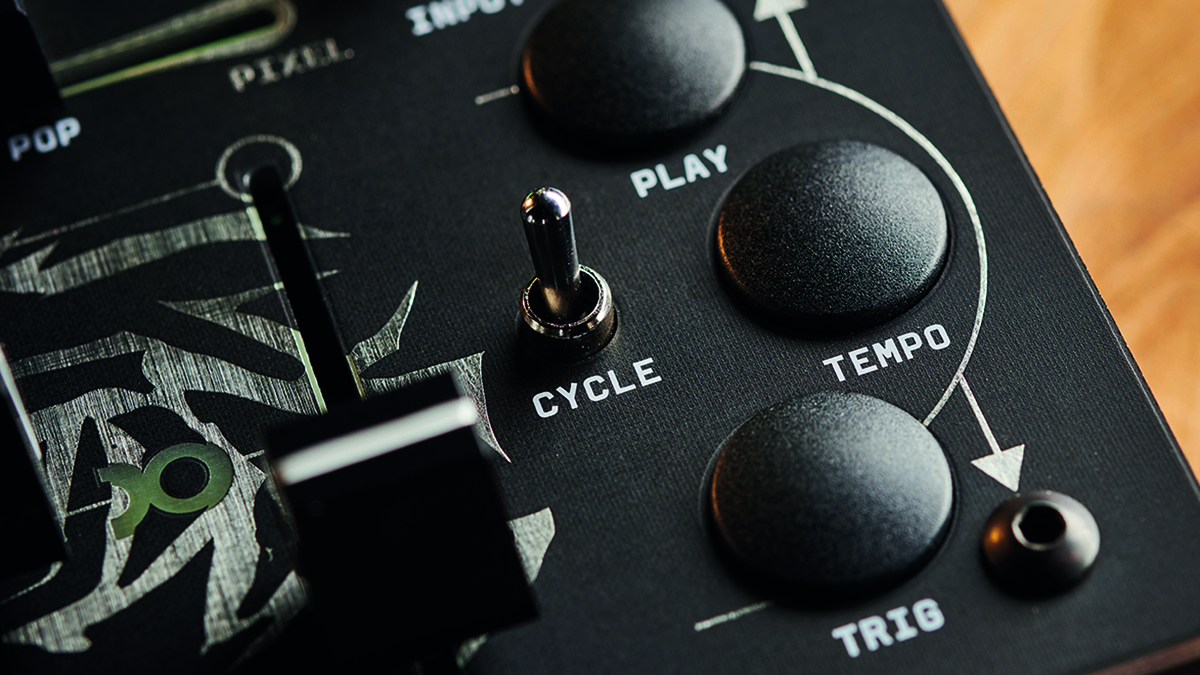MusicRadar Verdict
An instrument that offers vast tonal options and great sequencing, connectivity and portability. A huge leap over its predecessor.
Pros
- +
Massive range of tonalities.
- +
Excellent levels of control and patch options.
- +
Can serve as an all-in-one instrument.
Cons
- -
Inability to mount in a Eurorack case.
- -
Steep learning curve to memorise all of the options.
MusicRadar's got your back
Casper Bastl Softpop SPII: What is it?
Softpop SPII, a collaboration between Casper and Bastl instruments, is billed as the best product they have created yet and it is easy to see why they feel that way. Softpop SPII is one of those devices that can be many different things to many people. But what is it?
Softpop SPII (just Softpop from here on out) is a portable semi-modular synth, which is packed with a lot of features, the likes of which are usually only found on larger, keyboard-based instruments. It’s powered by 5 volts via USB power, so these features can be used on the go, from any standard power bank.

Physically, Softpop is a diminutive little thing, but solidly built. The case feels rugged and, while there is play in the sliders, all of the controls feel good with just the right amount of resistance.
Photos don’t quite do justice to the size, which is smaller, in height, than a Eurorack module. This is one of few gripes to be had with Softpop, as it is Eurorack-compatible when it comes to patching but can’t be mounted in your rack out of the box. Bastl has gone some way to address this but it does mean purchasing extra rails to adapt the case to a standard rails system.
This should work fine but means either running a USB power cable into your rig, or opening the case and converting it to a standard +5V rails power. It isn’t a deal breaker and many users will never give it a second thought but for an instrument with such a high level of patch possibility, it seems like a missed trick.

That aside, there is a lot to love about Softpop. The front panel looks a little intimidating at first and, while there is learning to do and muscle memory to build, everything is clearly labelled and there is good use of illumination to indicate things like rates, gates and so on.
To aid in learning the controls, without having to check the manual, everything is printed on the sides and rear of the case, making creativity much more efficient. Good move Bastl.
Want all the hottest music and gear news, reviews, deals, features and more, direct to your inbox? Sign up here.
Check the unit for the latest firmware, as the current version has some rather impressive additions, especially to the VCO section, which can be changed from analogue to digital (a jumper move has to be completed for this to work) with options for variable waveforms, along with some midi CC enhancements.

Casper Bastl Softpop SPII: Performance and verdict
Looking at Softpop compared to a more common synth it follows a fairly typical route. The VCO runs into the multimode filter that can operate in bandpass, low-pass or high-pass modes. You then have an envelope, with a toggle for cycling. The signal can be set to drone, via another toggle, or be played via the envelope.

• Moog Mavis
While not as complex as Softpop, this is a fantastic option for an all-in-one semi-modular synth in a portable package, which can also be mounted in a Euroack case.
• Make Noise 0-Coast
Similarly priced semi-modular synth with a focus on delivering complex harmonic structures and varied tones, all packed into a small, quirky package.
The most obvious controls on the panel are the six sliders, set in pairs, for adjusting things like tuning, modulation depth and envelope rate and shape. Above these are three horizontal sliders. The first two are obvious, labelled as fine tune and resonance (the 12dB filter is self-resonating), while the third is where a lot of the fun happens, in conjunction with rather a lot of options for cross-modding.
Softpop is capable of a massive variety of tones, thanks to the standard controls, the crossmods and patch bay options. In conjunction with the pop slider, it’s easy to dial in tones, whether that be a beautiful water droplet or some kind of retro games console noise.
Following the pre-patch signal is a fairly clear process, as the front panel is clearly labelled and laid out according to module type and patching is equally easy, as outputs are labelled with black on white, rather than white text on black.

Softpop has more than one winning feature, however. A key highlight is the sequencer. At first glance, it appears a simple 8-step sequencer but there’s more than meets the eye. It can store eight patterns in eight banks and with some patching, the step count can be adjusted to a desired variation too.
Step value for pitch can be set in a number of different ways and, as to be expected, the step buttons can be used to activate or mute steps. On top of this, you can record live or go to step edit mode, using the pitch slider or the up and down arrows to adjust in semitones. The sequencer step buttons are used with the scale button to select scales.
That’s all good, but Softpop has even more going on as the sequencer can also record and playback changes in modulation, including self-modulations, changes in scale and more. As for timing, Softpop has an internal clock as well as accepting external clocks, making it easy to integrate into a larger rig.

Softpop has functions that are only accessible via the patchbay and some are really rather useful, like the sample & hold and PWN, easy wins for adding variety to a pattern, or the wonderful ‘accent’, normally found only on drum sequencers.
If that wasn’t enough there are more opportunities using the XY knob. This could be used as a mixer, as a mod control or as an attenuator. With some patching, you can use this one knob to control morphing between sounds, adjust modulations manually and much more.
There’s more to talk about than there is space here to discuss but what it all boils down to is that Softpop is much greater than the sum of its parts. Even before introducing a single patch cable, the possibilities are impressive. Once you start breaking the pre-patched signal paths this expands rapidly.
Yes, there are some button combinations that you have to learn, which might not please everybody, but put the time in to figure out this little synth and it rewards that effort in spades.
MusicRadar verdict: An instrument that offers vast tonal options and great sequencing, connectivity and portability. A huge leap over its predecessor.
Casper Bastl Softpop SPII: The web says
"The Softpop SP2 is a lateral thinker’s paradise. It begs for its own rules to be broken, promising sonic rewards."
MusicTech
Casper Bastl Softpop SPII: Hands-on demos
Bastl Instruments
loopop
True Cuckoo
Perfect Circuit
Casper Bastl Softpop SPII: Specifications
- KEY FEATURES: I/O: Semi modular architecture, digital sequencer and quantiser, external sound processing, Eurorack compatible, midi connectivity, portable.
- CONTACT: Bastl Instruments
